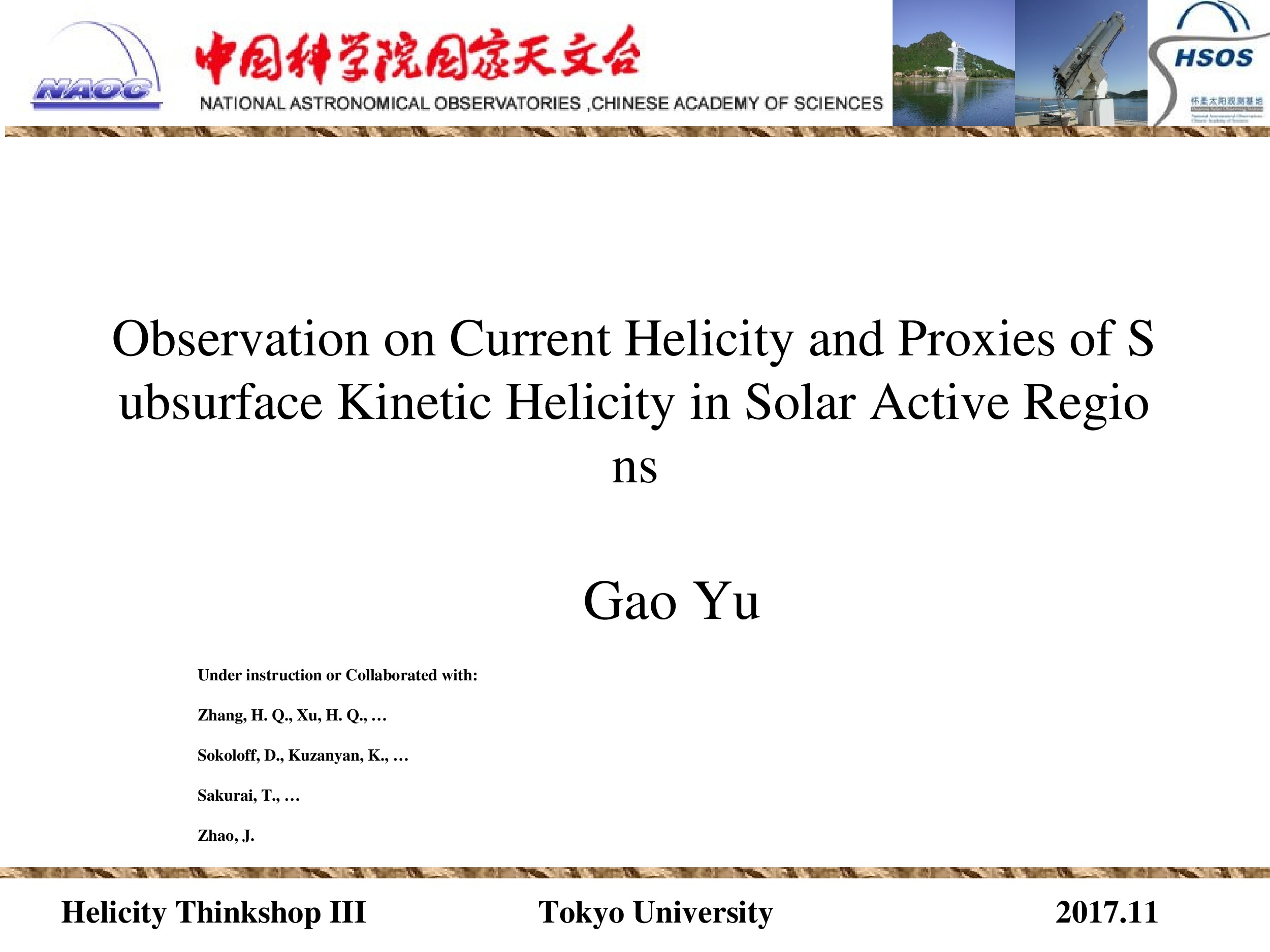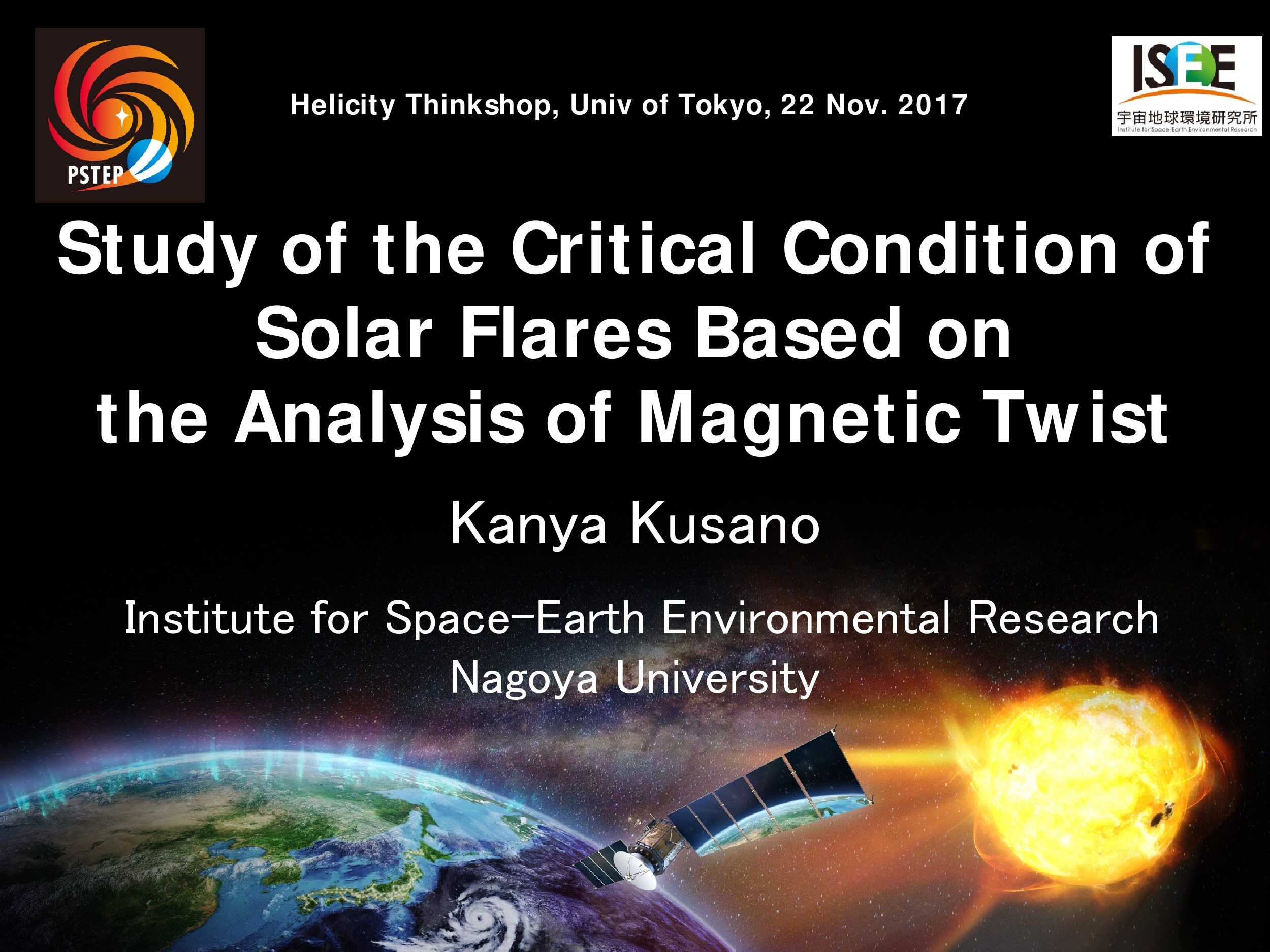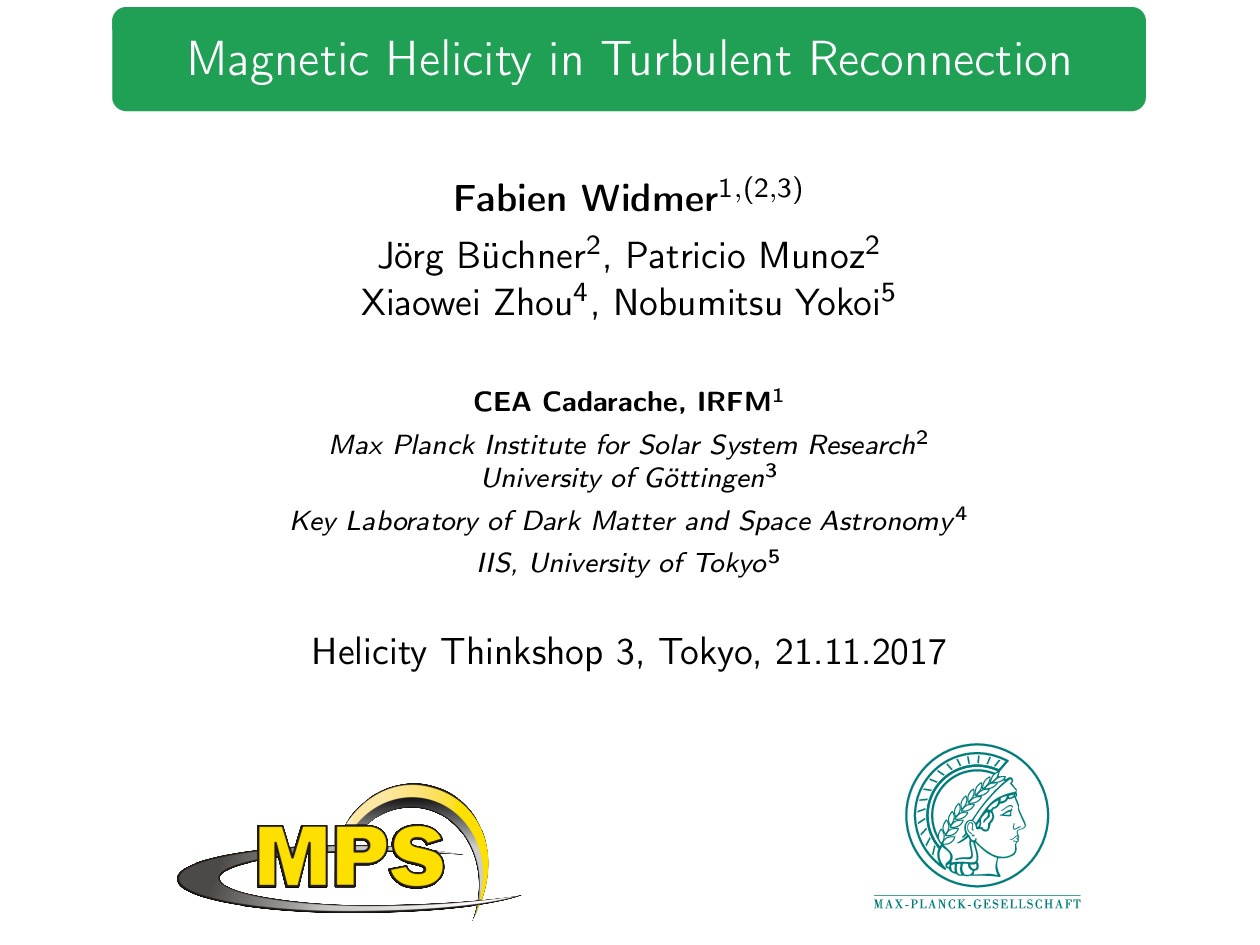
Institute of Industrial Science (IIS), University of Tokyo
Institute for Space-Earth Environmental Research (ISEE), Nagoya University
National Astronomical Observatory of Japan (NAOJ)
Other sponsor:
The Kajima Foundation
Scope:
Helicities (kinetic, magnetic, current, cross, etc.), as well as energies, are fundamental quantities of hydrodynamics (HD) and magnetohydrodynamics (MHD). In the presence of certain combination of anisotropies (caused by, e.g., rotation, gravity, magnetic fields, etc.), mirror and reflectional symmetries in HD and MHD turbulence are broken. Symmetry-breaking in turbulence is measured by pseudoscalars such as helicities, which represent the topological properties of turbulence. In helical turbulence, mean-field structures (global vorticity, mean magnetic field, etc.) can be generated through a dynamo action by turbulent motions. Therefore, the dynamic and magnetic activities of the Sun and stars are intimately related to turbulent helicities. These relationships have been extensively investigated, both theoretically and observationally.
In the past, two Helicity Thinkshops, mainly on solar physics, were held in 2009 and 2013 at the National Astronomical Observatory of China (NAOC) at Beijing, China (Chair: Hongqi Zhang). They originated from a Chapman Conference on Magnetic Helicity in Space and Laboratory Plasmas held at Boulder, USA, in 1998 (Chair: Alexei Pevtsov). This time we organize a Helicity Thinkshop in Tokyo, Japan.
Aims and Topics:
The aims of this workshop (Helicity Thinkshop 3) are
Topics to be discussed include
In order to enhance interdisciplinary communication, all speakers in Helicity Thinkshop 3 are expected to present their talks in plain, generic physics language.
Contact:

Nobumitsu Yokoi (Chair, University of Tokyo), Shoji Koyama (University of Tokyo), Takashi Sakurai (National Astronomical Observatory of Japan), Yoichiro Hanaoka (National Astronomical Observatory of Japan), Masaoki Hagino (National Astronomical Observatory of Japan), Shin Toriumi (National Astronomical Observatory of Japan)
Axel Brandenburg (Sweden/USA), Manolis Georgoulis (Greece), Kirill Kuzanyan (Co-Chair, Russia), Raffaele Marino (France), Alexei Pevtsov (USA/Finland), Takashi Sakurai (Japan), Dmitry Sokoloff (Russia), Nobumitsu Yokoi (Chair, Japan), Hongqi Zhang (China)
Registration fee is 10,000 yen (approx. 80 Euro or 90 USD) excluding the conference dinner (approx. 5,000 yen).
Registration fee should be paid in cash by Japanese yen on-site at the conference reception.
Request for an invitation letter, as well as other requests, if any, should be noted in the "Information" field of the Registration form.
Institute of Industrial Science, Univ. of Tokyo: Komaba, Tokyo
National Astronomical Observatory of Japan: Mitaka, Tokyo
University accommodations:
Some block of the following university accommodations are reserved for the workshop participants. Those who wish to stay there should name the accommodation and stay period (check-in and -out dates) in the "Information" field of the Registration form. Because of the limitation of the number of rooms, the accommodations and rooms are allocated on a first-come, first-served basis. The allocation will be individually announced later.
Other hotels:
Hotels in Shibuya and Shinjuku areas are closer to IIS, but the access to IIS from hotels in the downtown Tokyo is in general easy with public transportation.
Institute of Industrial Science (IIS), University of Tokyo
National Astronomical Observatory of Japan (NAOJ)
Financial support:
We have some limited funds for the travel support. In particular, for students, early career scientists and scientists from less developed countries. Those who wish to get partial financial support should tell us their support request in the "Information" field of the Registration form.

Session: Mon., 20 Nov.: Talks and discussion at IIS

Session: Tue., 21 Nov.: Talks and discussion at IIS


Session: Tue., 21 Nov.: Talks and discussion at IIS

Session: Wed., 22 Nov.: Talks and discussion at IIS, conference dinner at Ueno Park

Session: Thu., 23 Nov.: Talks and discussion at IIS


Session: Thu., 23 Nov.: Talks and discussion at IIS

Session: Tue., 21 Nov.: Talks and discussion at IIS

Session: Mon., 20 Nov.: Talks and discussion at IIS


Session: Wed., 22 Nov.: Talks and discussion at IIS, conference dinner at Ueno Park

Session: Wed., 22 Nov.: Talks and discussion at IIS, conference dinner at Ueno Park

Session: Thu., 23 Nov.: Talks and discussion at IIS


Session: Wed., 22 Nov.: Talks and discussion at IIS, conference dinner at Ueno Park

Session: Thu., 23 Nov.: Talks and discussion at IIS

Session: Tue., 21 Nov.: Talks and discussion at IIS

Session: Thu., 23 Nov.: Talks and discussion at IIS

Session: Mon., 20 Nov.: Talks and discussion at IIS

Session: Mon., 20 Nov.: Talks and discussion at IIS

Session: Wed., 22 Nov.: Talks and discussion at IIS, conference dinner at Ueno Park

Session: Wed., 22 Nov.: Talks and discussion at IIS, conference dinner at Ueno Park

Session: Mon., 20 Nov.: Talks and discussion at IIS


Session: Tue., 21 Nov.: Talks and discussion at IIS

Session: Wed., 22 Nov.: Talks and discussion at IIS, conference dinner at Ueno Park

Session: Mon., 20 Nov.: Talks and discussion at IIS

Session: Tue., 21 Nov.: Talks and discussion at IIS

Session: Tue., 21 Nov.: Talks and discussion at IIS
| First Name | Last Name | Affiliation |
|---|

